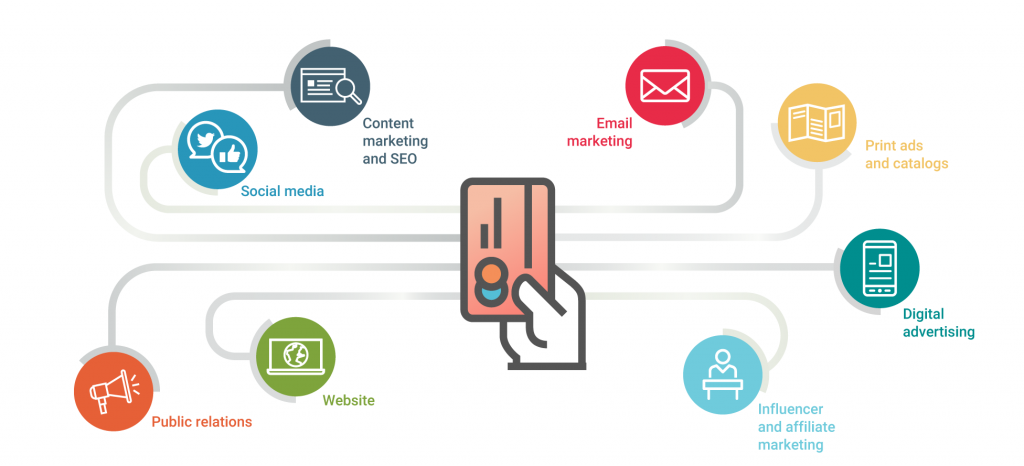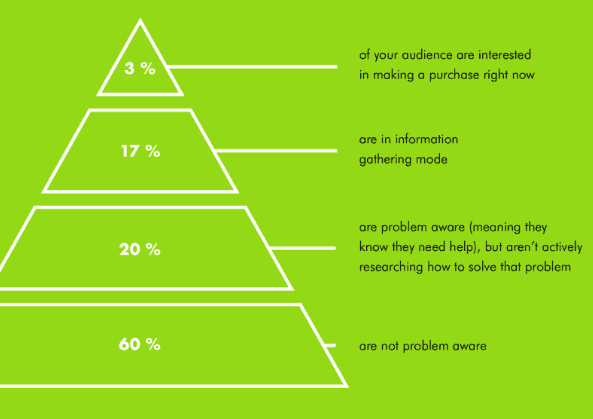Dominate Digital

Dear Business Builder
Glad you’re here.
If you’re interested to grow your business, you’re in the right place.
In this short ebook, you’ll learn how to Dominate any market, niche or industry whether you own a business or work for that business.
Now, let’s get this straight.
It’s not always easy or straight forward.
Point is, this should be your goal from the outset.
To Own Your market.
To Dominate It.
To beat your competitors.
To be the only brand your prospects think of when looking for a product or service you sell.
Now there are a million ways to skin the cat, but i’ll share some quick and dirty methods to get you give you a headstart.
So the easiest way to dominate and own a market is to create it.
Yes you read that right.
Create your own market and own it.
This can mean a lot of things, so let me explain
There so many big niches out there that you can easily create your own sub-niche and own it.
Let’s say your company provides Digital Marketing services.
You could specialize in Digital Marketing for banks and own that market.
Instead of going broad and trying to compete with a lot of people, you’d narrow down your market and try to dominate it.
It’s easier to customize your message, easier to deliver the services and easier to dominate.
But of course, sometimes you already have an established business and you can’t change the niche that you’re working in.
Or the size of your market as a whole is too small, then you can’t really take that approach.
You’ll have to deal with existing competitors but here’s the scoop.
In any market, the one who can buy the most customers will always win whether it is an online of offline business.

Let that sink in for a moment.
We are talking about buying customers.
In a very simplistic way of putting things, we’re all in the business of buying customers in exchange of value.
Whenever we’re talking about customer acquisition online, the main metrics we need to focus on are Customer Lifetime Value & Customer Acquisition Costs.
If you’re wondering what a CLV = Customer Lifetime Value is, here’s a definition
In marketing, customer lifetime value, lifetime customer value, or life-time value is a prediction of the net profit attributed to the entire future relationship with a customer.
Now let’s say you are responsible to grow Dental Practice.
You’d want to know things like how long a customer will stay with you, how much would they spend on average per visit and how many times they would visit per year.
Let’s say a patient is worth at least usd 5000 to a dental practice and it generally costs usd 500 to get a customer, that will give you a rough idea of how much you should budget for your advertising campaigns.
You could potentially say that you’d need to spend at least usd 5000 per month to get 10 customers which would potentially bring usd 50 000 over time which would be a health 10x ROI.
Based on those numbers you can determine how many customers you’re ready to onboard per month and how much advertising budget you’d require to achieve that number.
This comes back to the concept of buying customers that we discussed about earlier.
When you can predict the number of customers coming in your business every month like that based on your marketing campaigns that you run, this is what we call market domination.
Now in our context, we’re talking abou how to use online channels to generate customers and dominate our market.
Look how we’ve worked the numbers backwards and there is a very good reason for that.
There is no point running any Digital Marketing campaigns without set objectives and if we have proper numbers, we can plan our market domination and Digital Domination.
Digital Domination… How Do We Do That You’d Ask…
It’s pretty simple.
Be Omnipresent.

To be omnipresent, you need to be seen on all media channels your customers use
Some call it omni-channel advertising.
In practice, this could mean that your ads would appear on Google Search, Google Display, Youtube, Facebook, Quora, LinkedIn etc
Let’s illustrate how that works in reality.
Let’s say you run an insurance company and you want to push home insurance products.
Now before anything else, you need to make sure you have an irresistible offer.
In another words, an offer your customers cannot refuse.
Next thing you need to do is define your ideal customer avatar.
Defining your avatar is a very important exercise and we won’t go into too much detail here today. In essence you need to know everything about your customer.
Their hopes, dreams, desires, challenges, uncertainties and fears.
As you define that Avatar, you’ll also know where they prospects hang out
It’s pretty safe to say that the audience for this particular offer will generally hangout on Facebook, Google, Youtube, Instagram & Linked.
Now as mentioned before, you’d need to know your Customer Lifetime Value and your Cost Per Acquisition ( CPA )
If you don’t have them, you’d need to go with conservative assumptions.
Let’s assume your CLV is usd 10,000 and your CPA is usd 1000 and that you have a budget of usd 100 000 / month for advertising
Here’s how I would split my budget
| Usd 50 000 | |
| Google Search | Usd 10 000 |
| Youtube | Usd 15 000 |
| Google Display Network | Usd 25 000 |
We have the money and we have a media plan
We now need a strategy to spend it.
Starting with easiest, Google Search.
Advertising on Google Search is a no brainer. All you need to is bid on buyer keywords.
Here are some obvious keywords that come to mind for our campaign
home insurance
homeowners insurance
home insurance quotes
best home insurance
Home insurance plans
home insurance reviews
These keywords will obviously vary based on the country you’re in so you need to do some keyword research first but you get the idea
You can use tools like Google Keyword planner which is free or paid tools like SemRush.com to get keyword search volumes, costs and variations etc.
We are not going to get too deep on paid advertising in this post, you’ll find plenty of those on Youtube.
Let’s Stick To High Level Strategy, Alright?

In short here’s how it works:
1.Someone goes and types “ Home Insurance Quote” on Google
2. Your Ads show up and they click on it.
3. They land on your landing page
4. They fill up all the details on the landing page and request a quote
5. Everyone who successfully request for a quote land on a thank you page
6. We retarget everyone who landed on the landing page and didn’t request a quote with “reminder” type of Ad on Google Display Network and Youtube
7. We retarget everyone who a requested for a quote with a “reinforcement” type of Ad to make sure they see Ads so that they actually buy your plans.
8. We retarget everyone on Facebook and GDN + Youtube ( Google Display Networks ) with both “reminder” and “reinforcement” ads.
Obviously, you need to get the budgeting side of things for the different platforms split according to the initial planning.
See how we’re being present on Google Search and then cascading that on the other platforms?
Here’s how this works…
Prospects run a search for the keywords we’re bidding on and if they click on our ad, they start seeing your ads on Facebook,
Instagram, Youtube and Google Display Networks & LinkedIn.
From a technical perspective, they get pixeled and we use that pixel to remarket to everyone who has interacted with our ads.
That omnipresence increases brand awareness, gets customers to know you, like you and trust you more which ultimately increases conversions.
NB: You’ll need to add your Google Ads pixels, Google Analytics & Facebook Pixels to be able to track your numbers and re-target properly
As part of the strategy, we would retarget everyone who hits our landing page and does not request for a quote.
You’ll also need a well crafted landing page for this campaign
With Google Ads, you can get clients/leads the same day if you do it right. You’re targeting the Hot leads. ( 3% of the market who are ready to buy )
See Diagram below:

Prospects who are actively searching on Google generally have an intent to buy, that is your low hanging fruit and you should definitely tap into that audience.
The downsides with Google Ads is that competition is usually high because it’s obvious and easy, so all players want to get a piece of it.
If you need help setting all that up, you can get a free quote HERE
Let’s Move On To Facebook Advertising Now, Shall We?

Facebook is a little bit more complex than Google Ads and requires a lot more effort to make it work than on Google Search but it’s much more scale-able
Carrying on with our Home Insurance campaign here.
Now before we go any further, you need to understand one very basic and important concept.
You need to understand what is outbound and inbound marketing and where do you use them.
Let’s take an example again.
When you need to find a chiropractor or a plumber, more often than not, you’ll use Google.
Instinctively you’ll click on the links that are at the top of the page or you’ll call the numbers that appear. Your actions will based on which device you’re in and the urgency of the matter to you.
So in general you’ll find a website or content which is relevant to you and get in touch with the Chiropractor.
The process of putting out content out there in view to be found is called Inbound Marketing.
Inbound leads are the best type of leads because they are warm or hot. They have intent.
They are aware…. Of their problems and the relevant solution.
They are In-Market leads who are looking for the best solution for them.
But as mentioned before, that is generally less than 3% of your market.
Hence we need an effective way to market to the other 97%.
The 97% consists of the Warm and Cold market
These numbers are approximations that have been used over decades and that you can safely use today. It has a lot to do with interpretation thought.
Eugene Schwartz tackled this in Breakthrough Advertising back in 1966.
Schwartz broke down prospect awareness into five distinct phases:
1. The Most Aware: Your prospect knows your product, and only needs to know “the deal.”
2. Product-Aware: Your prospect knows what you sell, but isn’t sure it’s right for him.
3. Solution-Aware: Your prospect knows the result he wants, but not that your product provides it.
4. Problem-Aware: Your prospect senses he has a problem, but doesn’t know there’s a solution.
5. Completely Unaware: No knowledge of anything except, perhaps, his own identity or opinion.
If you’re smart, you’ll want to market to the warm audience in general. Acquiring cold customers will always cost you more.
Start with the low hanging fruit.
Tackle the hot and the warm market head-on, you can worry about the cold piece later.
See how I use the term in general quite a lot, because every market is different so you don’t need to take what I say for the word of god. You need to adapt it to your situation.
We took a bit of a detour here, but that’s an important piece we needed to cover.
Back to Facebook Ads.
We have a campaign of usd 50 000 per month
That’s roughly a usd 1600 a day, again this number is just a random pick
This ebook is not about teaching you how to run Facebook Ads, that’s a lesson for another day so we will just assume that you know what you’re doing.
The ultimate goal is to be omnipresent in front of your potential buyer and we are already present on Google Networks through our Search campaign above.
In terms of strategy, here’s what I would test.
I would start with an education campaign using video and text to educate and warm up the audience.
I would then retarget with the main offer using a conversion campaign.
Note that you can create a custom audience of users who’ve watched at least 50% of the educational videos.
Without getting into too much detail, here are the ingredients necessary to dominate Facebook
1.Stand out in the crowd.

Facebook’s newsfeed is always busy with so many different ads and people sharing stuff, your ad should be set to stand out otherwise it will go unnoticed.
Get creative as much as you can. I will give you some tips on how to do that someday.
Sometimes just a color contrast can make a huge difference
2. Use appropriate conversion objectives. E.g If you are driving traffic to a landing page and want to generate leads, use conversion objectives so that Facebook can optimize it for you.
Too often I have seen people run Click campaigns thinking that they are cheaper but in general, that would end up costing you even more.
Look at your end goal.
Sometimes, a combination of campaign objectives can do wonders.
3. Make maximum use of the Facebook Pixel
You’ll be suprised by the power of an optimized pixel.
As far as possible, run Conversion campaigns and set your conversion pixels for different objectives like Add To Cart, Purchases, Lead Signup etc.
4. Make optimum use of retargeting options available
Create custom audiences based on video views, pages visited, engagements etc
5. Build your campaigns around your audience’s fears, hopes, dreams and desires.
The strategy is not that complicated if you look at it but both Google and Facebook are quite complex as platforms, so I would advise you hire someone with experience to run your campaigns.
But the good news is that we can help you execute this Secret
strategy from end to end.
If you have a great offer/product/service and you’d like to take over your market, dominate and get clients at will…
Get in touch with us and let’s talk.
